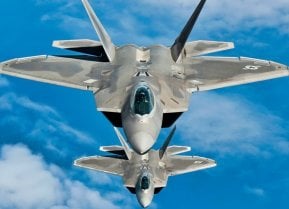Why Bombing the Houthis Won’t Work
The United States enjoys an overwhelming advantage in military and economic power over the separatist group. Why can’t it deter them?
In the early hours of Friday, January 12, the United States and the United Kingdom launched strikes against the Houthi rebel group in Yemen. The first strikes were aimed at more than sixty targets across sixteen different sites and were focused on missile, radar, and drone facilities controlled by the Houthis. A second wave targeted twelve additional sites, while a follow-on attack in the early hours of Saturday, January 13, struck a Houthi radar site. Although the strikes damaged or destroyed ninety percent of their targets, the Houthis retained approximately three-quarters of their drone and missile capabilities.
These strikes came after the United States and its allies attempted to coerce the Houthis into abandoning their attacks on shipping in the Red Sea. In a joint statement with several of its allies on January 3, the White House warned the Houthis to discontinue their “illegal, unacceptable, and profoundly destabilizing” attacks and promised that they would “bear the responsibility of the consequences should they continue to threaten lives, the global economy, and free flow of commerce in the region’s critical waterways.”
Instead of convincing the Houthis to back down, the strikes triggered a massive pro-Palestinian rally in the Yemeni capital, Sanaa. At the same time, the Houthis vowed to retaliate against American and British targets. The United States enjoys an overwhelming advantage in military and economic power over the Houthis, even if we take into account the resources of their Iranian backers. Yet the threat to wield the world’s most powerful military was not enough to convince the Houthis to abandon their attacks on shipping in the Red Sea. Why not?
In my book, Cheap Threats: Why the United States Struggles to Coerce Weak States, I examine why the United States struggles to coerce weak states like Iraq, Afghanistan, and Libya. The argument draws on the logic of costly signaling, which asserts that signals must be costly for the sender in order to effectively signal high levels of commitment; by contrast, “cheap talk” cannot convince the receiver that the sender is highly resolved. In other words, signals that are cheap and easy to send do not convey any information about the sender’s underlying resolve or motivation.
The United States’ threats fail because they are cheap. That is, the United States has adopted a model of military power that renders the use of force relatively easy and inexpensive, and thus, the threat to employ it does not convince the intended target that the United States is serious about obtaining its objectives. The hallmarks of this model of cheap force include the reliance on standoff strike capabilities and unmanned aerial vehicles (UAVs), the use of an all-volunteer military supplemented by military contractors, and the funding of operations through deficit spending, among others. The target of a cheap U.S. threat does not doubt that it will be carried out—that is, it does not doubt that the threat is credible—but it does doubt the United States’ willingness to follow through after the bombs and missiles fail to alter the target’s behavior. Consequently, any strategies or choices that make the use of force easier or less politically costly or that remove barriers to the use of force by the U.S. administration undermine the effectiveness of the United States’ coercive threats.
These strikes against Houthi targets in Yemen bear all the hallmarks of the cheap model of American force: they were standoff strikes that placed U.S. forces at low risk, without any suggestion or possibility of employing ground troops, and they were carried out without Congressional approval. In fact, when asked whether Biden would be willing to employ ground troops, NSC Director for Strategic Communications John Kirby asserted, “We’re not interested in a war with Yemen.” All of these elements make it easy and cheap for the United States and its allies to implement these strikes. Indeed, it is difficult to imagine a strike that would be less difficult to execute. Yet this is precisely why the warning on January 3 failed to coerce the Houthis into backing down and why additional strikes are bound to fail in the same manner.
The fact that the Houthis retain most of their capabilities to menace shipping in the Red Sea suggests that the United States and its allies may launch additional attacks. Indeed, British foreign secretary David Cameron told the BBC on Sunday, January 14, that the UK was “prepared to back our words with actions” if the Houthis’ attacks continue. These additional cheap strikes will be no more effective in coercing the Houthis to abandon their campaign against Red Sea shipping than the previous ones. Much like the United Kingdom had to confront its waning influence in the Middle East during the Suez Crisis in 1956, it is time for the United States to realize that it cannot effectively coerce its targets on the cheap.
About the Author
Dianne Pfundstein Chamberlain, Ph.D., is an independent scholar who specializes in U.S. foreign policy and international security. She was formerly a fellow in the International Security Program at the Belfer Center for Science and International Affairs, Harvard Kennedy School, and was an assistant professor in the Department of Political Science at the University of Massachusetts, Amherst. She is the author of Cheap Threats: Why the United States Struggles to Coerce Weak States (Georgetown University Press: 2016).
Image: Shutterstock.com.


